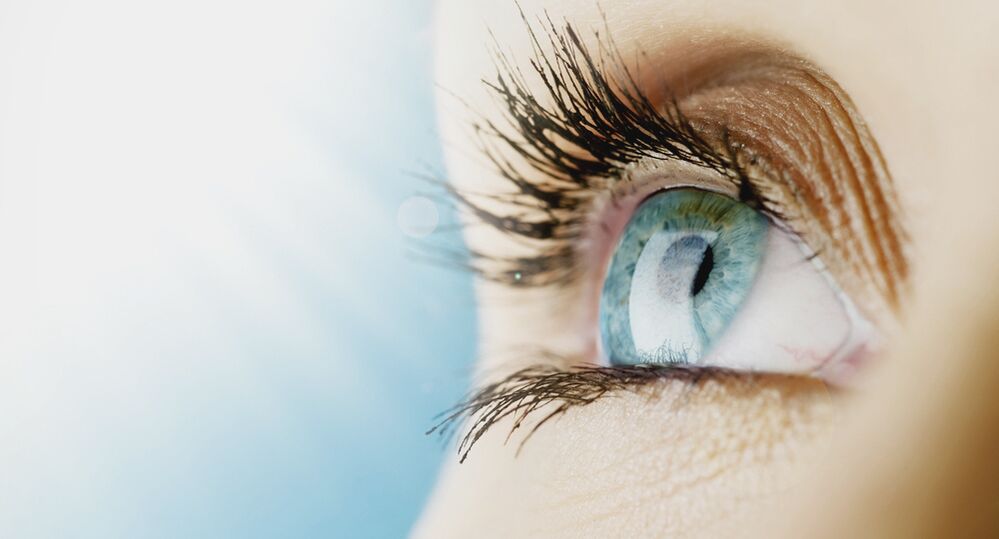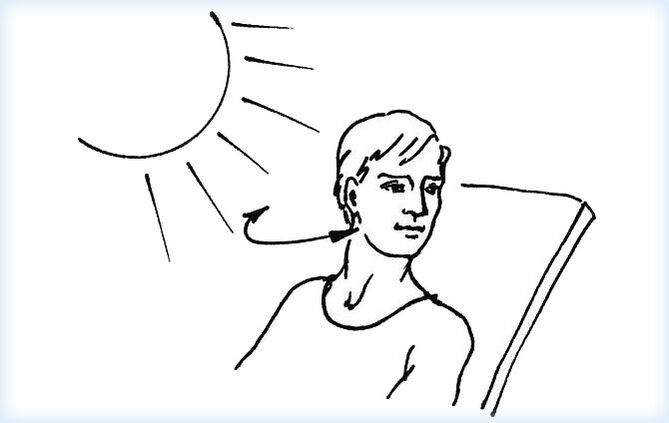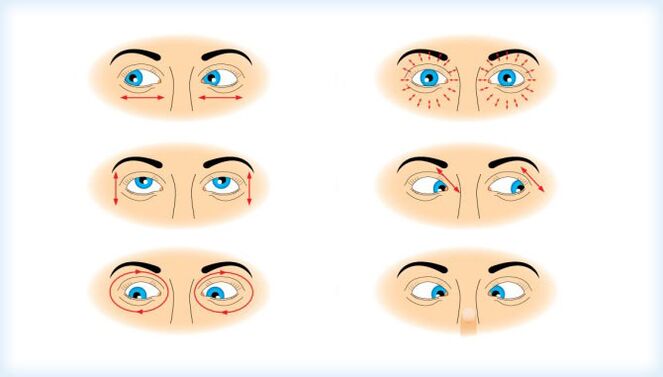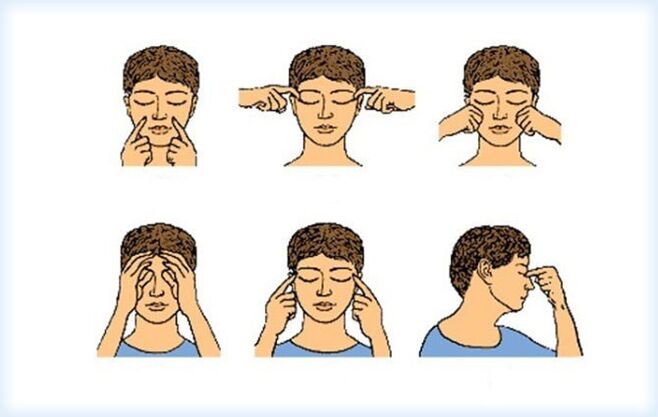
Gymnastics performance rules
- Only regular gymnastics will bring benefits. The system must be followed. Choose a gymnastics move for yourself—twice a day, in the morning or evening, and once every few days. Remember, consistency and absence of omissions are key to the effectiveness of the complex.
- Be patient when practicing. If you're in a hurry to get somewhere, you shouldn't even start doing gymnastics. Then the opposite effect will occur. You may run the risk of exerting yourself inappropriately or, conversely, over-straining your eye muscles, thus worsening the results of your gymnastics.
- Don't overdo it. Don’t think that the more often you repeat gymnastics exercises, the faster you’ll feel the healing effects. This is far from the truth and your useless efforts will put unnecessary stress on the visual organ.
- Keep intervals. You should not start each new exercise immediately after completing the previous one. Sit with your eyelids closed for about half a minute before starting a new exercise.
- rest. There is no benefit in sitting in front of a computer day and night while doing gymnastics. If you decide to take on the task of restoring your vision, be prepared that you will need to approach the process holistically, both from a nutritional perspective and from a daily life perspective.
According to W. G. Bates's Pocket Law
- It is necessary to warm your palms. The best way is to rub them together until they are reddish and warm.
- Fold your palms so that the palms and inner ribs are in contact with each other and on the same plane.
- Bend your elbows, find a point of support (such as a table or your knees), and close your eyes with your palms so that only the fingers of one hand are resting on top of the other.
- Stay in this position for 5-7 minutes. If necessary, repeat after some time.
During the initial stages of palming, you may experience not entirely pleasant sensations, pain and a feeling of pressure "from within" in the eye area. This is completely normal and the discomfort will go away after a few workouts.
Exercise 1. I am writing to you. . .
- Get into a comfortable position, lying or sitting.
- Close your eyes.
- Relax.
- Imagine you have a pen taped to the tip of your nose and you desperately need to write a letter.
- Now you can start drawing simple shapes or writing whole words, but of course using your nose and not your hands.
- The neck should also be involved in this process.
- First, try writing the entire alphabet.
- Increase the difficulty and try to recreate your favorite verse or at least a few lines from it.
Exercise 2. look through your fingers
- Bend your elbows.
- Spread your fingers.
- Place your palms over your eyes so that the back of each palm is directly under your eyes.
- Now use your finger to observe any object in the room.
- The most important thing is not to focus on the fingers themselves; the point of the exercise is to see beyond the fingers.
| Exercise name | delivery time | Number of entries |
|---|---|---|
| Exercise 1 | 30 seconds | 3 ways |
| Exercise 2 | no more than 5 seconds | 3 sets of 10 reps |
| warm up | 30 seconds | 2 to 3 methods |
Sun exposure: the life-giving power of light
- Sveta;
- sun;
- Candle;
- Electric incandescent lamp.

- Take a position relative to the light source so that your face is facing the light source. Eyes should be closed.
- Don't squint and try to adjust to bright light (your eyes should still be closed). If your eyes hurt, you can cover your eyes with your palms for a short while, then take them off and try again.
- You need to turn your head slowly, first to the right and then to the left, so that the light can work evenly.
- After you're done tanning, perform palm care.
Improve blood circulation through gymnastics
| No. | describe | delivery time | Number of entries |
|---|---|---|---|
| Exercise 1 | Using massage movements, move from the lower part of the eyelid of the right eye to the bridge of the nose, and then along the eyebrow of the left eye back to the bridge of the nose. So it's like you're drawing an infinity symbol or glasses | do the exercise for a minute | This exercise is performed in 2-3 ways |
| Exercise 2 | Move your eyes from side to side, as if moving your pupils along the horizon. Do this as quickly as possible, but without pain in your eyes while doing the exercise | within thirty seconds | 2-3 methods |
| Exercise 3 | Move the eyes up and down, moving the pupil along the vertical line at maximum speed | within thirty seconds | 2-3 methods |
| Exercise 4 | Squint your eyes quickly and relax your eyes immediately | Execute 10 times | 2-3 methods |
| Exercise 5 | Place your index finger on the bridge of your nose. Try to bring your eyes together to look at him. | Focus on your fingers for two to three seconds. | five methods |
| Exercise 6 | blink very fast | within twenty seconds | three methods |
| Exercise 7 | Look out the window. Designate yourself a specific object in the distance. Place a circle on the glass next to the object. Shift your eyes from distant objects to stickers and vice versa | within one minute | three methods |
Fight myopia with gymnastics
| No. | describe | delivery time | Number of entries |
|---|---|---|---|
| Exercise 1 | Close your eyes. Sit up straight. Try leaning back and taking a deep breath. Without opening your eyes, lean forward and exhale | Execute for one minute | Two methods |
| Exercise 2 | Lean on the seat back. Open your eyes. Lean forward and slam your eyes shut, then open your eyes and return to the starting position | Execute for one minute | Two methods |
| Exercise 3 | While seated, place your hands on your waist and turn your head to one side, then the other so that you can see your elbows | Execute for one minute | Two methods |
| Exercise 4 | Start rotating the eyes clockwise, then counterclockwise | Do this for thirty seconds in one direction and thirty seconds in the other direction. | Three trips |
| Exercise 5 | Extend your arms. Look at your fingertips. Raise your hands, but watch your fingers. You can't move your head. Once you can't see your fingers, put your hands down | Execute for one minute | Two methods |
Movement-based gymnastics

- Eyes make circular movements;
- describe geometric shapes with your eyes;
- gaze; gaze;
- Guide lines (up, down, left and right);
- Blink/close your eyes.
| No. | exercise | describe |
|---|---|---|
| 1 | focus | You should look into the distance and point it to the furthest point in your sight. Slowly move your eyes to the tip of your nose |
| 2 | circular motion | Draw a circle with your eyes. Repeat 10 times. Next, perform the exercise in the opposite direction. |
| 3 | blink | Blink rapidly for several minutes |
| 4 | squinting while sitting | Close your eyes for a few seconds and repeat a few times |
| 5 | eyelid massage | Close your eyes and massage your eyelids in gentle, firm circular motions. |
| 6 | eye contact | Focus on where the eyebrows are together, hold for 2-3 seconds, then return to the starting position and repeat |
| 7 | Head rotation accompanied by eye movement | You should slowly turn your head to one side and look in the same direction. Next, turn your head in a different direction. |
- Focus on distant objects. Place your fingers 30-40 cm away from your face. Look into the distance and then focus on your fingers.
- Read "between the lines. "Pick up a book, read a few paragraphs, and focus on the white spaces between the lines.
- Head turns. Turn your head to the left, then to the right, always looking forward.
- Observe moving objects.
After each set of exercises, you need to give your eyes a rest. You can relax your eye muscles with light massage or pressure.
preventive gymnastics
- "Picture Letters. " You need to use your eyeballs to describe any number of letters of the alphabet. The exercise is considered fully completed if you are able to describe all 33 letters.
- Open your mouth - close your eyes. Open your mouth and then your eyes at the same time. Try opening your mouth and eyes at the same time.
- Blink/close your eyes. It is necessary to alternate frequent blinking with squinting for 3-5 seconds.
- Massage the upper eyelids using gentle circular motions.
- Move your eyes up and down.
- Move your gaze sideways.
- pressure. You should close your eyelids and not press hard on them.
- Look through your fingers. Cover your eyes with your palms, spread your fingers a short distance apart, look at them for a few seconds, then squeeze tightly again.
- Zoom out. You need to close your eyes, touch the outer corners of your eyes with your middle finger, and then pull it to both sides. You need to feel a slight tension in the muscles.
- Lower your head, relax your neck muscles, and rest your chin on your sternum. Turn your eyes to the floor. Then slowly tilt your head back and look upward.

| Sports group | initial position | example |
|---|---|---|
| Exercises to strengthen eye muscles | Keep your head still while sitting | Look right, then left, without changing head position |
| Exercises to stimulate circulation and blood flow | sitting | Alternately close your eyes |
| accommodation exercise | permanent | Hold your outstretched fingers 30 cm from your face and focus your gaze on them. Without changing the focus, slowly move your fingers towards the face. When your fingers look like two fingers, you need to smoothly move them back to their original distance |
Exercise your eyes in the morning
- Maintain a horizontal position and stretch and relax your neck muscles.
- Open your mouth and eyes several times in sync.
- Perform a few squints for 3-5 seconds.
- Then blink frequently, but not very quickly.
- Close your eyelids and use your nose to describe any shapes in the sky. You can "write" words, letters or "draw" this way. The average duration of this exercise is 2-3 minutes. The images that arise during this practice cause the brain to "wake up" faster and get back to work.
- Lift and lower your eyebrows a few times. Sometimes frowning, sometimes surprised.
- Lie on your back and perform palm massage.
- Turn your head from side to side for 2-3 minutes. This can relieve tension in the upper spine, which is especially important if you have to sleep in an uncomfortable position.
Exercise your eyes at night
- Close your eyes and lie down for a while.
- Without opening your eyes, rotate your pupils clockwise and counterclockwise.
- Open your left and right eyes alternately.
- Look at an object two or three meters away from you. Shift your gaze to more distant objects. Then came the final level.
- If possible, hang letters over the desk, like you would in an eye doctor's office. Every night, read the letter and study the outline. Remember how much you saw initially, how much you saw a week later, and so on.
- Finally, use your fingertips to pull the eyelids away from the eye. Do this on the bottom, top and sides for a minute.
Tibetan gymnastics

- Peripheral vision training. Stretch your arms forward and place your two index fingers 35-40 cm in front of your eyes, bringing them together. Without changing your gaze, slowly open your arms and stretch your fingers to both sides. The goal is to look straight ahead but see the finger in the peripheral vision. Then place your fingers in front of you again.
- pressure. Press your fingers gently and quickly onto your closed eyeball, then open your eyes and try not to blink for about 5-6 seconds.
- square. Describe the square with your eyes: look down - left - up - right. Then repeat in the opposite direction: up-right-down-left.
- Blink frequently for about a minute.
- Light eyelid massage. With your eyelids closed, use gentle massaging motions along the upper eyelid, moving outward from the inner corner of the eye, and then along the lower eyelid.
Each movement of Tibetan gymnastics should be performed for at least one minute, or repeated at least 10-15 times.
Yoga for your eyes
- Exercise 1
Achieve even, smooth breathing. Try directing your gaze to the space between your eyebrows to actually connect your pupils in the bridge of your nose area. Of course, you won't succeed the first time, but with systematic repetition, you will achieve success. You need to hold the pupil in place for at least two seconds and gradually increase the delay time again and again. This exercise should be done ten times, allowing your eyes to rest for a few seconds after each approach. - Exercise 2
After the first practice, give your pupils a short rest, blink, close your eyelids for a moment, then open them smoothly. Once you feel the tension subside, be ready to move on to a new exercise. Your position remains unchanged. Eyes should be open and breathing should be even. Place your fingers on the tip of your nose and try to see with both eyes. Therefore, the pupils will again meet at the bridge of the nose, but the gaze will already be downward, unlike in the previous exercise. Repeat ten times, giving your eyes a break in between. - Exercise 3
Now try to look to the right with both eyes, try to look as far away as possible without turning your body and head. Then look to the left. Now we repeat the same thing, looking up and down. This exercise won't be easy for you; the further you move your pupils, looking in one direction, the faster you'll get the desired effect from the complex. - Exercise #4
Still maintaining an even posture, observe that your breathing is smooth, and proceed to the next stage. Look down, don't lower your head. Then start moving one pupil in a clockwise direction. Once you reach the starting point of your exercise, begin moving counterclockwise. Then start drawing a circle from above. Practice twenty methods, ten each above and below the eyes. Try to slowly form a circle with your pupils while trying to see as much of each side as possible. - Exercise #5
Now you need to relax your eye muscles again so that they are no longer tense and feel a surge of strength. To do this, close your eyes, think of something good, then observe your breathing evenly and rest for a few minutes.
According to doctors' practices, daily morning and evening yoga classes help strengthen muscles, relieve stress and generally improve retinal health. This means you can try to restore lost units without the help of a surgeon.



















